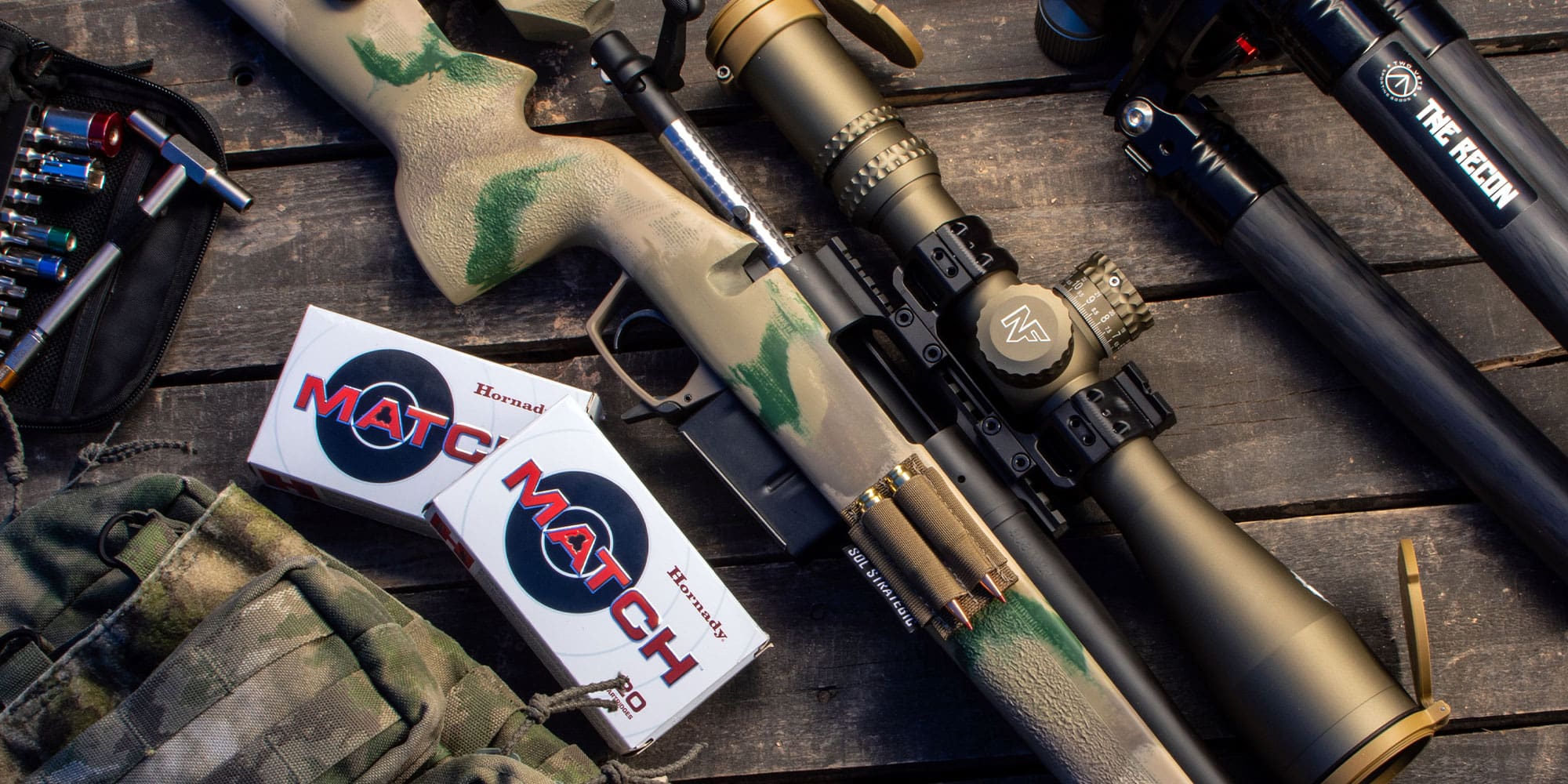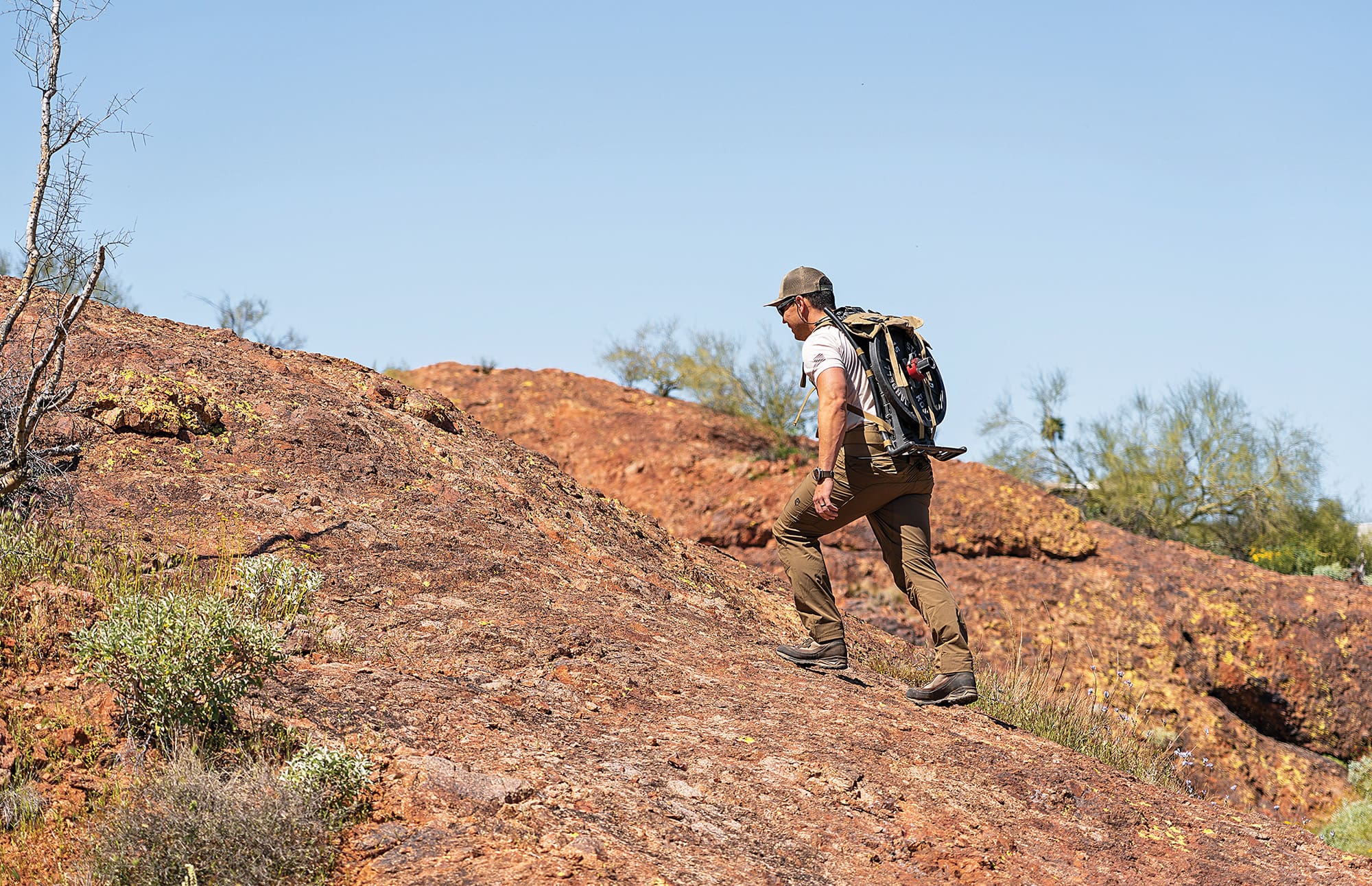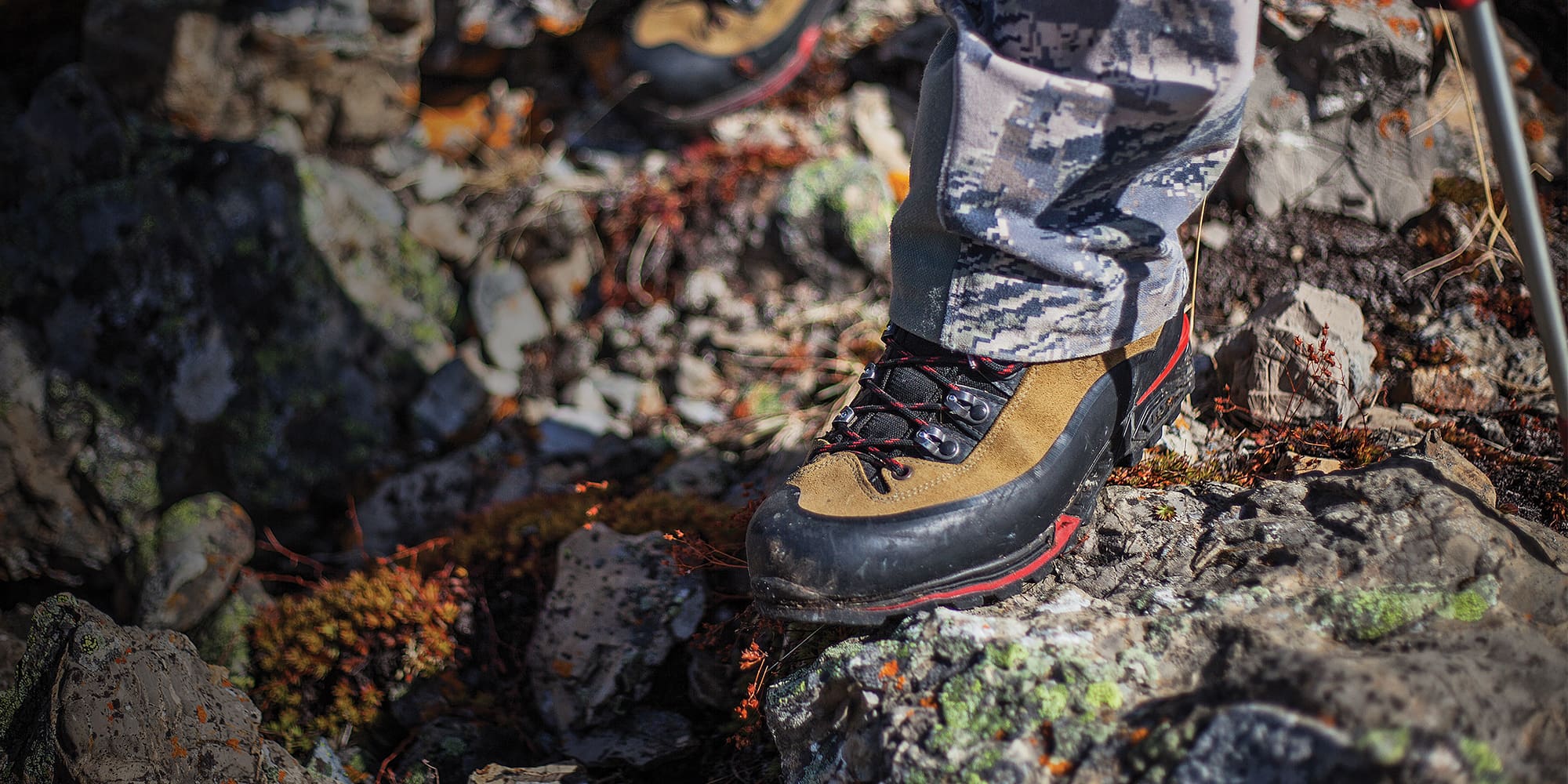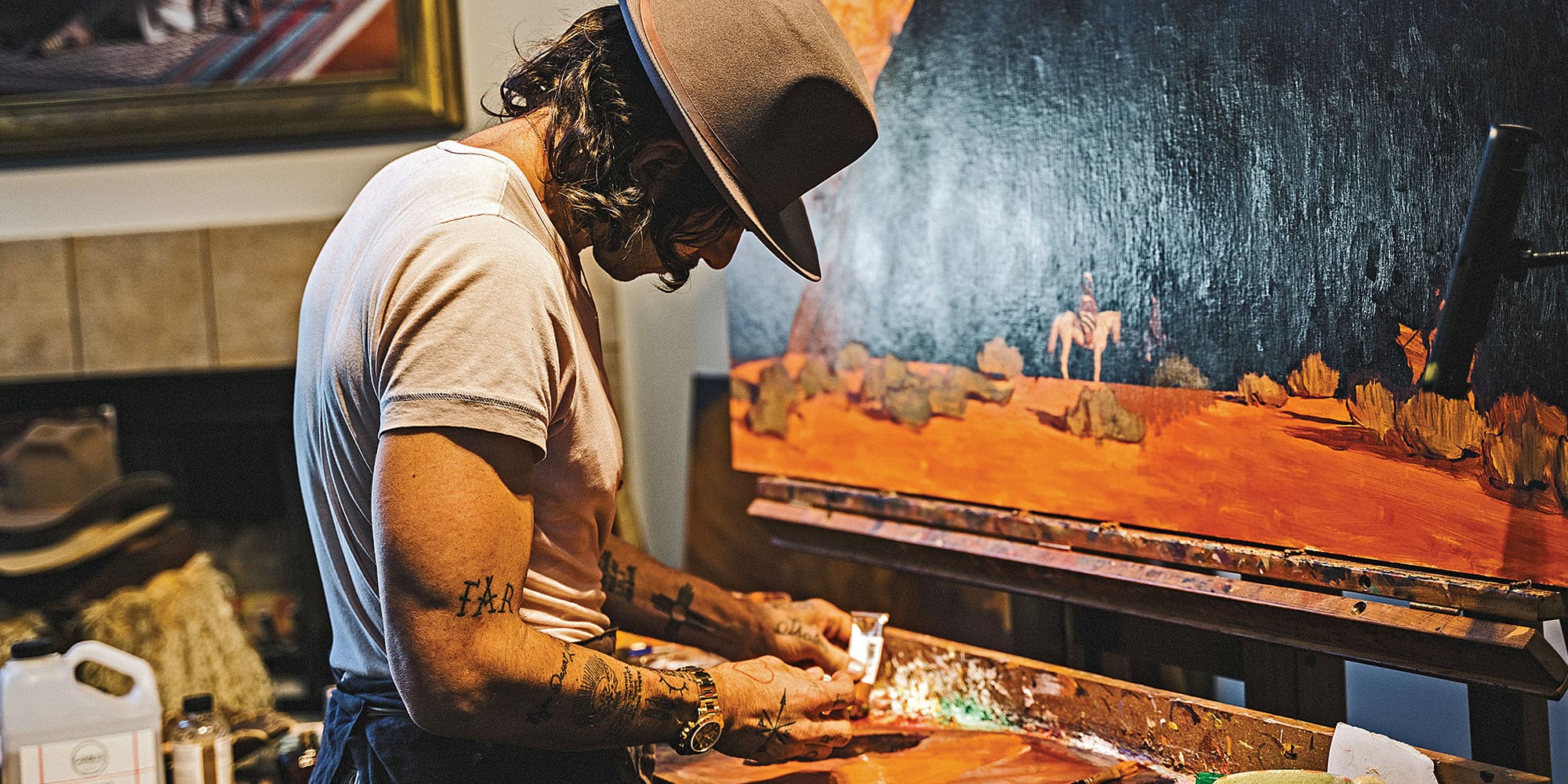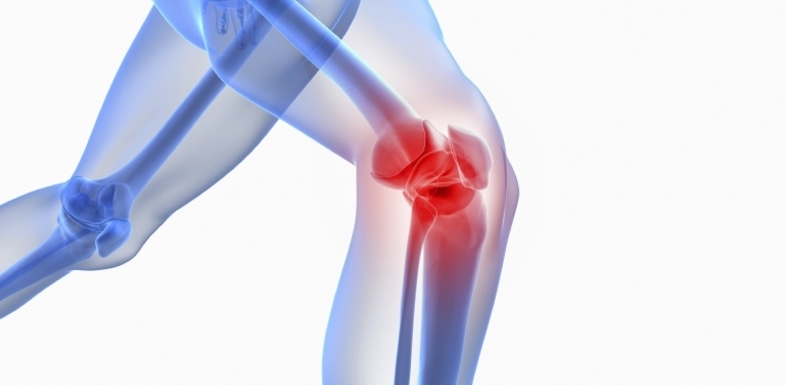
NOTICE: Certain links on this post may earn a commission for Western Hunter Magazine from Amazon or our other affiliate partners when you make a purchase. Thank you for your support.
Developing and Maintaining Healthy Knees - Part 2
This article may not have much meaning to you right now (especially if you’re young), but I want to encourage you to pay close attention because the odds are that someday you will be without the healthy knees you have today.
Coaches, or ex-coaches like myself, love to incorporate slogans or phrases that impress athletes with which they work. Recently, I visited with WHM’s Editor, Ryan Hatfield, about a chronic knee condition that he was suffering through and he asked if I could address this painful topic. Ryan’s look of frustration brought to mind the following truism: When the pain of staying the same exceeds the pain of change, then you will change!”
We all whine about our conditions to some extent, but until we hit a certain level of discomfort, we just tough it out. You could certainly argue that this is an admirable quality and often it’s a necessary quality for backcountry hunters. However, at some point, the suffering starts to dominate your life, and you and all those around you pay a price for it. Staying the same is no longer an option and it's time to dig in and deal with it.
Only You Care About Your Healthy Knees!
I can personally attest to suffering at a high level, and the mistake I made was thinking that the medical community would come to my rescue. They did not. In retrospect, my advice is to come to terms early on with the reality of the demands that are placed on the health care system and the sheer volume of patients that are ushered in and out of a doctor’s office every single day.
My neighbor and hunting partner, Dave Rauch, who works with doctors on a daily basis, summed it up as concisely as you can when he commented, “Do you think that doctors go home at night and say to themselves, ‘Now how can I fix Mark Paulsen?’”
Now, to be sure, quite often they can fix the problem. But MRI’s and CT scans are often not good diagnostic tools for soft tissue injuries or the pain associated with chronic knee pain or similar issues.
I now believe that personal responsibility regarding any injury, with the tools we now have at our disposal, will have a far greater and lasting benefit than the belief that a quick trip to the doctor’s office or ER can or will eliminate your problem.
Narrowing It Down
In part 1, I addressed building stronger legs and healthy knees. For this issue, my focus will be on the “chronic knee” problem…but it comes with a disclaimer: I don’t have a magic wand. Also, take the substance of my message and apply it to any physical malady that you may be experiencing! For those of you who are healthy as a horse from top to bottom, I hope to impart a little wisdom that you can put on the shelf for another day.

Chronic Knee Pain: Having met with orthopedic surgeons and athletic trainers on the subject of chronic/arthritic knees, the prognosis is never “one size fits all”. It is, in fact, a search. Often the condition is the result of an athletic injury, a work injury, or trauma from perhaps an accident as a child. Similar to last issue’s article, I will provide bullet points of potential solutions as well as give you a couple assignments that you may want to consider.
The vast majority of knee problems are caused by one of two problems. First, poor strength in the vital leg muscles surrounding the knee. Second, tight muscles and ligaments surrounding the knee (quadriceps, hamstrings, and IT band) are causing a compression of the kneecap against the articulating surfaces of the femur.
Excellent Video Reference for Stretching and Healthy Knees
I went online and watched dozens of short videos on YouTube and there were several that were outstanding, but one stood out. The moderator works with the U.S. Navy SEALs. Like a good coach, he used some graphical illustrations along with utilizing a subject to take you by the hand and demonstrate the exercises necessary to stretch the tissue around the knee, thereby providing substantial relief from chronic knee pain.
I can’t emphasize enough how invaluable this resource is in helping anyone get a clear picture of how to attack a problem knee. If you go to YouTube, put “Navy Seals BUD/S Preventing Knee Pain” in the search box. This 14-minute video could literally change your life.
In fact, 25 years ago, I had a procedure done for a chronic condition in both my knees called Chondromalacia (calcification deposits under the knee). The doctor told me there was a good chance that the surgery wouldn’t result in any significant improvement. He was right. The sad fact is that had I simply followed the stretches in this video, it likely would have alleviated all my symptoms and the surgery would have been unnecessary. I strongly encourage you to watch this video!
Searching for the Big Picture
Experiment and monitor the results: I asked a highly qualified physical therapist the following question: “Would you recommend heat or ice for someone with chronic knee problems?”
He indicated that it was very individual. Some folks get great relief from heat while others prefer icing after activity. I know that’s not real scientific, but it is “real world” advice. Knee pain is so highly variable and individual that you may need to experiment and pay close attention to relief/results you experience.
Euflexxa: The Head Athletic Trainer where I worked for decades told me of a product called Euflexxa that is now being used for osteoarthritis with fairly high success. It is an injectable medicine/lubricant where you receive three shots into the knee over a three-month period. You would obviously need a physician to authorize this procedure and administer the shots. You may want to talk to your personal doctor if it interests you or for more information on this product.
Altering the intensity/duration/repetitiveness of your routine: Something you may be forced to consider is altering your activity level. I know habits are hard to break and a structured exercise routine can be a part of your mental health, but let’s face it - grinding and inflammation can rock your world! One day on, followed by one or even two days off, may be required to get a handle on your knee pain.
Here’s the good news, and you’ve probably heard it before. Long-term health has far more to do with your diet than your exercise routine. Don’t be so stubborn that you destroy the long-term viability of your healthy knees just to prove to yourself that you’re not getting older! It’s called wisdom.
Surgery: Depending on the severity, sometimes surgery is the only option for torn meniscus, ACL, MCL or collateral ligaments. Of course, that’s between you and your doctor, and you may want to get more than one opinion. In fact, I strongly encourage it!
Total knee replacements are also now providing an incredible opportunity for the person who has just hit a wall and can see no way out. According to the experts with which I visited, the only drawback is that the durability of these units is limited to around 10-12 years. Again, please research this in greater detail if this applies to your condition.
Lower-impact alternatives: From an exercise standpoint, I think anyone who loves to run but finds that the old knees just aren’t recovering (despite consistent stretching), should consider cycling or mountain biking. I’ve had more than one physical therapist extol the virtues of two-wheel drive!

I’m a firm believer in a full range of motion whenever possible, but I also know what it feels like to experience sharp, excruciating knee pain. If you can only do ¼-squats comfortably, then do that. The tension and strength gained from a ¼-squat is better than nothing.
Lighten up: Also, remember, the more weight you place on that knee, whether it’s excess body weight or added weight from resistance training, all adds up! Once you’ve ruled out poor flexibility as a problem, and you know your mechanics are sound in any given leg movement, then take a hard look at the load you are placing on the knee and lighten up!
If you have doubts about your squat mechanics, I encourage you to try medicine ball squats. The movement itself pretty much guarantees good mechanics as long as you keep your head up.
I doubt very much that you’re carrying 200 pounds up the mountain with you. You’re more than likely carrying yourself and a pack ranging from a 10-lb. fanny pack to a 60-lb. pack headed to your base camp.
Think you need to squat heavy? Years ago I worked out with a young man named Gary Kinder, who was the top decathlete in the U.S. and headed to Seoul for the Olympics. He spent the majority of his time performing body weight squats! My college roommate and I, on the other hand, were collegiate discus throwers who both squatted over 700 lbs. Guess who is still jumping around like a jackrabbit today? Now, guess whose backs and knees are pretty much fried? Wisdom…
Step Up for Healthy Knees
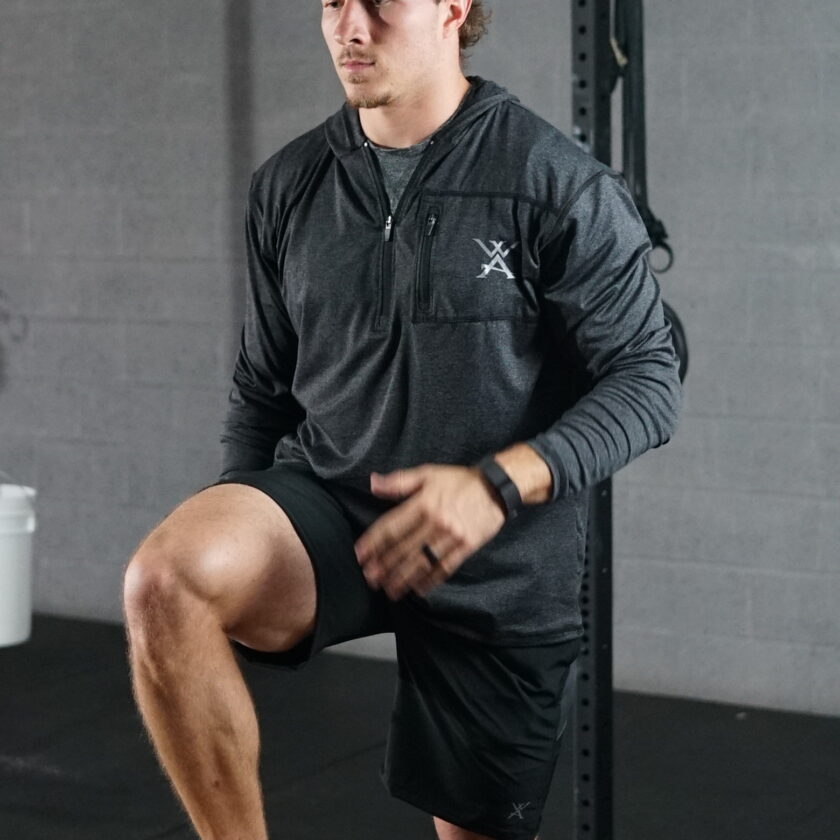
I’ve always promoted step-ups as a great leg and knee strengthening exercise. However, when it comes to knee pain, it makes more sense to perform step-ups from a lateral box position than a forward position. The forward position creates an immediate angular load (knee over toe - weight on the ball of the foot), whereas the lateral step-up position allows for better weight distribution throughout the entire length of the foot and an initial load on the quadriceps.
- Try keeping the lead foot in contact with the box or platform throughout the duration of the set before switching to the opposite leg.
- I recommend alternating 4 sets of 10-15 reps per leg.
- Keep the box at a comfortable height that doesn’t irritate the knee and where you feel the load on the quad and the pressing foot.
- If you feel like it’s necessary to push off the floor with the trail leg to gain momentum, then you’re going too heavy.
- I always recommend starting with the box height well below a 90-degree angle and progress only if it still feels comfortable.
- Start with just your bodyweight and perform them from a lateral position.
- As a side note, especially as we get a little older, our gluteal muscles often times become very weak. Weak glutes ultimately lead to weak knees. Try crossover step-ups, initially with no weight, to activate these gluteal muscles into your strength program.
- Just don’t start off by doing too many reps or you’ll be cussing me from afar.
Do What It Takes for Long-Term Health
If you want to understand total body mobility on a higher level, I’d highly recommend the book, Becoming a Supple Leopard, by Dr. Kelly Starrett. It sounds a little touchy-feely, but this is by far the best book I’ve ever found that addresses how to achieve mobility throughout the body, keep your healthy knees, and avoid painful injuries that generally occur due to the lack of mobility. It’s super easy to follow, with great pictures illustrating every stretch.
In closing, just an admonition for those of you with chronic anything: Do your own research that addresses your personal physical challenges! The information you need might be just a click away. I know one thing; you’re the one that feels the pain, so you have to fight your way out of it. Search the internet, go to YouTube, ask questions, and keep digging! If you choose not to, I can only assume that the pain of change is still greater than the thought of losing your healthy knees. Hunt Long, Hunt Strong
- Coach P.



